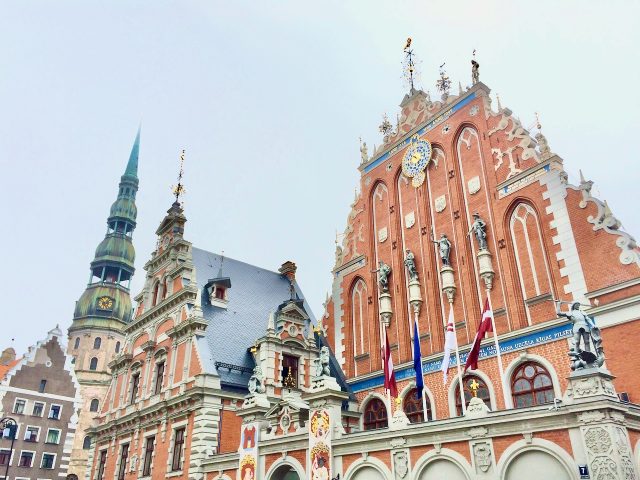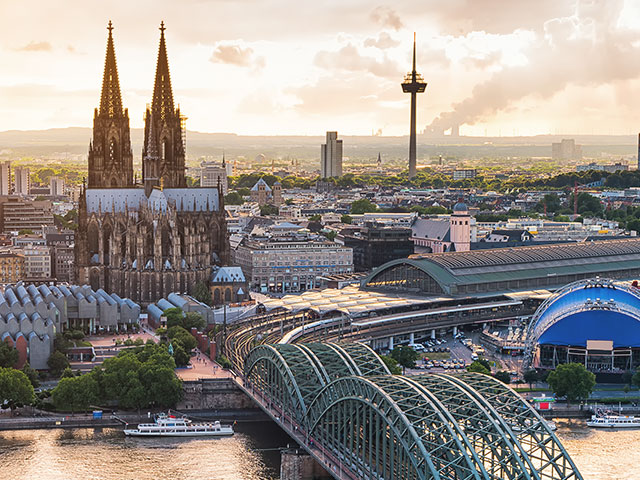How do I arrive to Lucca?
- Train: there are frequent trains to Florence (aprox. 1 hour 45 minutes), Pisa (aprox. 30 minutes) or Viareggio (aprox. 25 minutes) from Lucca. It's also possible reaching Pietrasanta from Lucca (aprox. 1 hour), Pisa (aprox. 30 minutes) or Viareggio (aprox. 10 minutes)
- Bus: there are many buses from Lucca to all over the region like Pisa (aprox. 45 minutes).
- Car: if you rented a car from Lucca you can reach Pisa in 30 minutes, Pietrasanta and Pistoia in 40 minutes, Massa and Carrara in 45 minutes, Livorno in 50 minutes, Prato in 1 hour and Florence in 1 hour 15 minutes.
History
What can I visit in Lucca?
- Lucca City Walls: 4.2 km long city walls built between the 16th and 17th centuries (replacing the old ones, some of them dating back to the 2nd centruy BC), remaining in an almost perfect state of conservation. They have a path with trees on its top and nice views of Lucca's Old Town and the Apuan Alps.
- Lucca Cathedral (9:30-18:30 Mon-Fri, 12-18:30 Sat-Sun from Mar to Nov; 10-17 Mon-Fri, 12-17 from Dec to Feb; 3€): 11th century Pisan Romanesque style duomo built to join the existing bell tower. Its façade is impressing and is attributed to Nicola Pisa. The interior has interesting sculptures like the crucifix Volto Santo or a 14th century tomb in the sacristy. Other important works of arts are Ultima Cena by Tintoretto or Madonna and Child with Saints Peter, Clement, Paul and Sebastian by Ghirlandaio. It can be visited its Tower (3€) and the Cathedral Museum (4€), small museum that keeps the golden and silver decoration for Volto Santo. There's a combined ticket for these 3 places and St. Giovanni e Reparata Church (9€/ 6€ adults/ reduced).
- St. Giovanni e Reparata Church (10-18; 4€/ free adults/ kids under 6): former 12th century church used nowadays for opera shows. Nowadays it has an archeological zone (with Roman remains) and a bell tower with nice views.
- Lucca Ducal Palace: palazzo built for Castruccio Castracani (duke of Lucca) by Giotto, inhabited afterwards by Paolo Guinigi and then transformed into palazzo pubblico. Currently it's the seat of the Province of Lucca.
- Tower Guinigi (9:30-18:30 from Mar to Oct; 9:30-16:30 from Nov to Feb; 5€/ 4€ adults/ reduced): tower (45 m high) has 7 oaks that, according to the legend, lost all leaves when Paolo Guinigi died. From there it can be enjoyed magnificent views. There's a combined ticket for Guinigi Tower, Torre delle Ore and Lucca Botanic Garden for 2 days (9€/ 6€ adults/ reduced).
- National Museum of Villa Guinigi (12-19:30 Tue-Sat; 4€/ 2€/ free adults/ retiree and students/ kids under 18): museum located in former Paolo Guinigi's villa with expositions about Lucca, its history and its art.
- Torre delle Ore (9:30-18:30 from Mar to Oct; 9:30-16:30 from Nov to Feb; 5€/ 4€ adults/ reduced): tallest tower in the city that dates back to 1390, as a clock tower. It was changed in the 18th century by the watchmaker Louis Simon and its mechanism is still in use nowadays.
- St. Michele in Foro Church (7:40-12 and 15-18 from May to Sep; 9-12 and 15-17 from Oct to Apr): 11th century Romanesque style church built where there used to be the Roman foro whose façade is quite impressing (and it's one of the most outstanding churches in Lucca). Its inside is quite dark but has an impressing painting by Filippino Lippi, Pala Migrini.
- Piccini Birth House (10-19 from Mar to Oct; 10-17 Wed-Mon from Nov to Feb; 7€/ 5€/ free adults/ retiree and students/ kids under 11): museum that shows the beginnings of the famous composer Piccini, discovering its personality, passions and genius.
- Domus Romana Lucca (9-13 and 15-19; 3€): small museum that shows the remains of an old Roman home that has been only partially excavated.
- Pfanner Palace (10-18 from Apr to Nov; rest of the year open on request; 6.50€/ 5.50€/f ree adults/ retiree and students/ kids under 12): 17th century palazzo that belonged to Felix Pfanner, Austrian inmigrant who introduced beer in italy. Its garden is quite charming, with an artificial pond and 18th centuries statues. Here it was partially filmed The Portrait of a Lady by Jane Campion.
- Basilica of St. Frediano (9-18:30; 3€/ 2€/ free adults/ students/ kids under 11): 12th century Romasque style church in whose façade there's an impressing golden mosaic. It also has a huge 12th-century Romanesque baptismal font and St. Fridianus remains.
%2FPietrasantaMassimoBorchi-AtlantidePhototravel-GettyImages-5acf45aac064710038c2c6d9.jpg&f=1&nofb=1) |
| Piazza del Duomo and St. Martino Cathedral |
Where can I eat in Lucca?
In case your choice is visiting Pietrasanta an intelligent choice is eating at Filippo () or try some wines at L'Enoteca Marcucci (Via Garibaldi 40).








 13:35
13:35
 Banknotemaniac
Banknotemaniac
 Posted in:
Posted in: